
views
- The earliest signs of rabies in dogs are muscle pain, lethargy, fever, diarrhea, and restlessness.
- As the infection progresses, your dog may start foaming at the mouth, have difficulty swallowing, and lose the ability to move their jaw or hind legs.
- A rabies infection reaches its peak when a dog becomes uncharacteristically aggressive and starts biting the air.
Recognizing the Signs of Rabies

Notice if your dog is restless, vomiting, or has a fever. The early stages of rabies can last from 2 to 10 days, and catching the disease early can help your dog get the medical attention they need. At first, your dog will appear to have an “ordinary” sickness with non-specific symptoms, such as: Muscle pain Restlessness Irritability Chills Fever Fear of bright lights Lack of appetite Vomiting Diarrhea Cough

Check for signs of paralysis and foaming around the mouth. A dog’s mood and motor skills will change as a rabies infection spreads. Often known as paralytic rabies or the “dumb” form, this phase of the disease is the most common and lasts about 3 to 7 days. Notice if your dog starts foaming from the mouth, becomes lethargic, or exhibits any of these symptoms: Paralysis or the inability to move legs, facial muscles, or other body parts Dropping of the lower jaw Abnormal barking sounds Excess salivation or foaming around the mouth Difficulty swallowing Dilated pupils

Be aware of behavioral changes and aggression. The most aggressive and severe phase of a rabies infection lasts around 3 to 7 days and can make your dog more hostile or excitable. This stage of the infection is known as the “furious” form, and animals that exhibit these symptoms should be approached with extreme caution, as their mood can change instantly. Contact animal control or your veterinarian if you notice these signs: Fear of water Aggressive or overly excitable behavior Fly biting, where the dog bites the air wildly Abnormal behavior, like chewing on rocks, rubbish, or legs.
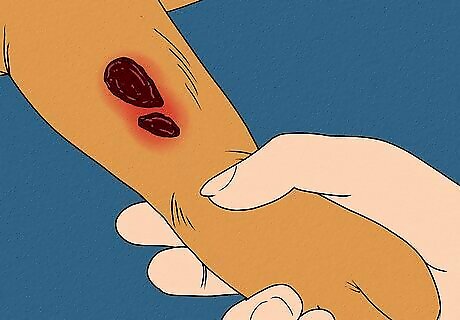
Look for bite marks or open wounds on your dog. Rabies spreads through the saliva of an infected animal. If your dog has a wound or bite mark, it could be the site of the infection. Carefully examine your pet for any open wounds when they start displaying general signs of sickness. Once the disease enters the body through the mouth, eyes, nose, or open wound, it travels toward the central nervous system, affecting the spinal cord and brain.
Seeking Medical Attention

Contact a veterinarian if you suspect your dog has rabies. If you know your dog’s been bit by an infected animal or is showing signs of the disease, isolate your dog to a room or crate and avoid contact until you talk with your vet. The vet will ask you questions about the possible exposure and provide a solution for how to safely transport your dog to a clinic to test your dog for rabies. Wear gloves, a long sleeve shirt, and long pants when handling a possibly exposed animal, as the rabies virus can live on skin and hair for up to 2 hours. Call animal control if you see signs of rabies in a dog that isn’t yours. This way, the dog can be safely transported to a veterinarian without putting yourself or others at risk. Rabies is almost always fatal in dogs and humans, so always contact your vet for treatment options.
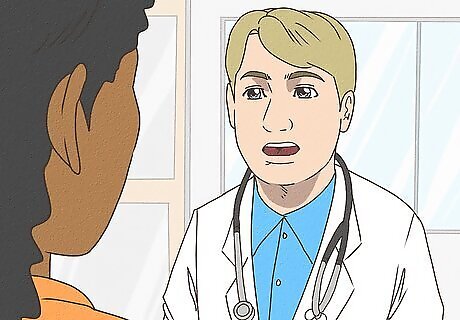
Ask your vet what your options are if your dog is infected. If your dog has rabies and has their rabies vaccine, your vet will most likely give them a booster shot of the rabies vaccine to help their immune system fight off the disease. However, if a dog hasn’t had the initial vaccine, euthanasia or a 6-month quarantine may be recommended. Infected animals must be carefully monitored for 45 days, so your vet may give you instructions to follow once your dog’s boosted. Euthanizing an infected animal prevents serious health risks, especially if the animal’s condition worsens.

Check your dog for diseases with similar symptoms, like meningitis or tetanus. Many other canine illnesses have the same symptoms as rabies. Always takes your dog to the vet if they display any signs of sickness, as they’ll be able to diagnose rabies or other illnesses with similar symptoms like: Infectious canine hepatitis Meningitis Tetanus Toxoplasmosis Brain tumors Maternal aggression in females who have recently whelped (given birth) Poisoning from chemicals such as diminazene or organophosphate
Preventing Rabies
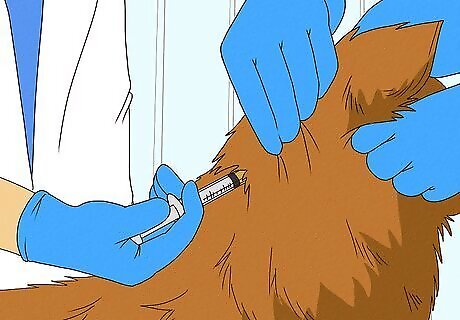
Vaccinate your dog against rabies. The best and cheapest way to prevent your pet from getting rabies is to vaccinate them. Set up a regular vaccination schedule with your vet to keep your dog’s rabies vaccine up-to-date. Depending on the vaccine type and state laws, your dog might be on a yearly or bi-yearly schedule. Puppies should have their first vaccine between 12 and 16 weeks of age. Find out what your state’s laws on rabies vaccination are by talking to your vet or searching your state with “rabies vaccine laws” online.
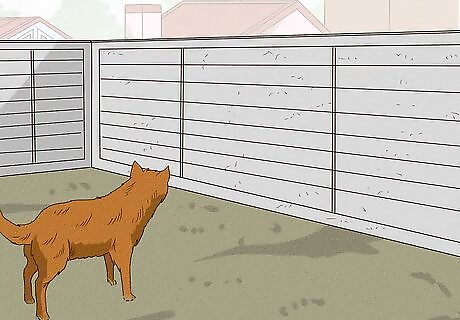
Limit your dog's exposure to wild or stray animals. A great way to keep your dog safe is to keep them from interacting with wild animals. Put a fence around your yard or use a leash to walk your dog. Wild and stray animals can carry diseases, including rabies, so stopping your dog from interacting with them can help them stay safe and healthy. Be extremely cautious when bringing your dog to other countries. For instance, Afghanistan, Brazil, Nigeria, and Russia are considered high risk for canine rabies.
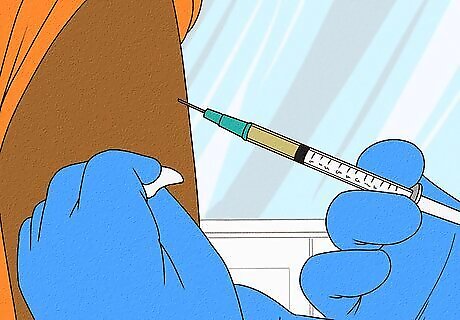
Get a pre-exposure vaccine yourself. If you’re in a high-risk area or occupation, having a pre-exposure vaccine can help you stay safe. For example, if you live near caves with wild bats or work as a wildlife biologist, getting the vaccine can help lessen the risk of rabies. The CDC also recommends the pre-exposure vaccine for travelers who stay more than 1 month in an area with widespread rabies. High-risk occupations include: Veterinarians Veterinary technicians Rabies laboratory personnel Those who work with wildlife at wildlife sanctuaries, rehab centers, or parks For more information about areas with widespread rabies, check out this list from the CDC.

Treat wounds caused by potentially rabid animals immediately. If you’re bitten by an animal that might have rabies, wash the wound with soap and water for 10 minutes. Then, call your doctor's office and tell them a potentially rabid animal has bitten you. They’ll be able to give you specific instructions on when to come into the office for testing or if you need to go to a specialty clinic or emergency room. Keep an eye on the animal who bit you, as they'll also need to be retrieved and treated for infection. If you test positive for rabies, you’ll most likely need a post-exposure vaccine treatment, which varies depending on whether you’ve had previous rabies vaccines.




















Comments
0 comment